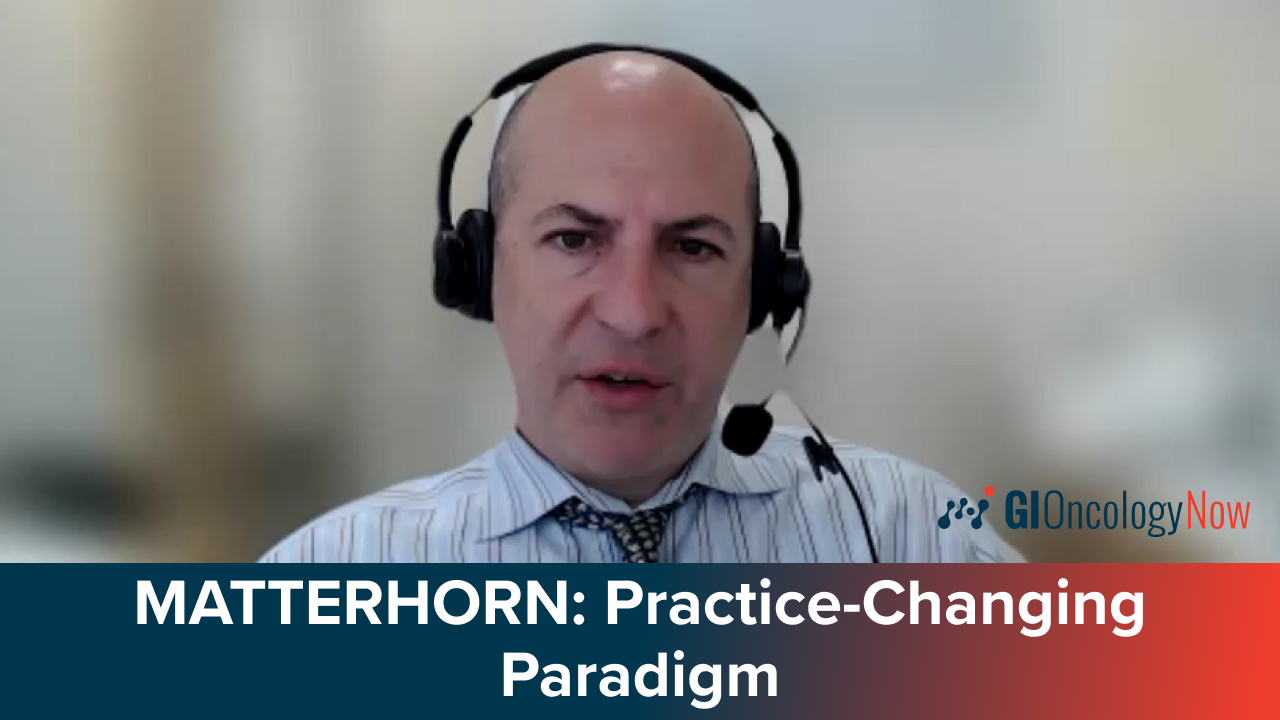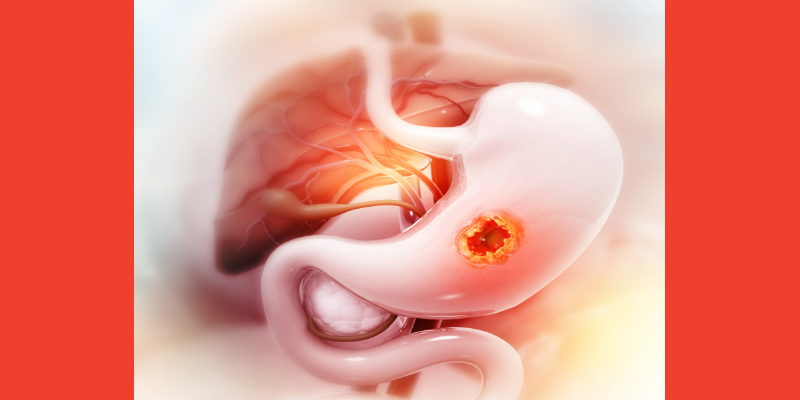Platinum Chemotherapy, PARP Inhibitors for Gastric or Esophageal Cancers
By Nilay Sethi, MD, PhD - Last Updated: March 19, 2025Nilay Sethi, MD, PhD, continues his discussion on NER deficiency in gastric cancer cell lines in response to cisplatin treatment.
Dr. Sethi also notes the key takeaways from his latest research regarding the potential use of platinum chemotherapy and PARP inhibitors in the treatment of gastric and esophageal adenocarcinoma.
Find his previous comments here.
—
Can you elaborate on the findings regarding NER deficiency in gastric cancer cell lines, specifically in response to cisplatin treatment, and how this was validated?
Dr. Sethi: Before delving into nucleotide excision repair (NER), I’ve primarily focused on homologous recombination (HR) deficiency, which is a frequently observed pathway impairment in cancer. However, it’s worth noting that nucleotide excision repair has also been implicated in cancer, particularly demonstrated in bladder cancer where ERCC2 mutations were identified, leading to the development of a mutation signature.
Returning to our research journey, upon discovering the HR deficiency scores, we proceeded to examine cell line models categorized by high and low HR deficiency scores. To validate the authenticity of HR deficiency, we employed rigorous methods such as immunofluorescence and assessment of cellular response to DNA damage. Moreover, we demonstrated that cell lines characterized by high HR deficiency scores exhibited heightened sensitivity to drugs approved for HR-deficient ovarian and breast cancers, notably PARP inhibitors. Conversely, models with low HR scores, presumed to be HR proficient, showed reduced sensitivity to these inhibitors.
The translation of our findings into clinical relevance was indeed a thrilling milestone for our team. During the validation process, we encountered a notable observation: one particular cell line exhibited remarkable sensitivity to Cisplatin, a drug known to exploit synthetic lethality in HR-deficient cancers. Intriguingly, despite being categorized as HR proficient, this cell line displayed sensitivity exclusively to Cisplatin, hinting at potential inefficiencies in DNA repair mechanisms.
Recognizing this discrepancy, we embarked on an investigation to ascertain whether this cell line might harbor deficiencies in nucleotide excision repair. Employing various methods, including mutation analysis, we uncovered compelling evidence suggesting NER deficiency in this cell line. Notably, the presence of multiple mutations across different components of the NER pathway emerged as a key indicator retrospectively, underscoring the significance of thorough analysis in elucidating cellular mechanisms.
Indeed, our exploration of nucleotide excision repair deficiency initially unfolded through a series of investigative steps. We initially evaluated whether conventional NER assays, considered gold standards, could detect any deficiency in the cell line of interest. To establish a benchmark, we utilized a known NER-deficient breast cancer cell line as a positive control. Subsequently, employing these assays, we successfully demonstrated that the gastric cancer cell line exhibited NER deficiency, albeit to a partial extent, relative to both other gastric cancer cell lines and HR-deficient cell lines that did not display NER deficiency. This comparative analysis provided valuable insights into the unique genomic landscape and repair mechanisms operative in the investigated cell line.
Having conducted two gold standard tests for NER deficiency, we attained compelling evidence to assert the NER deficiency status of the cell line under investigation. Building upon this validation, we sought to broaden our understanding of NER deficiency in gastric and esophageal cancers. Leveraging a signature initially developed in bladder cancer, which relies on the presence of ERCC2 mutations, we applied it to our cohort of gastric and esophageal cancers. While a smaller fraction of cases exceeded the threshold validated in bladder cancer, it represents a significant stride in elucidating the landscape of NER deficiency in these malignancies.
These preliminary findings mark the nascent stages of exploring NER deficiency in gastric cancer. However, the identification of a truly NER-deficient model and the potential existence of a subset of patients exhibiting similar characteristics open avenues for further investigation. Importantly, this discovery holds promise for the development of predictive biomarkers tailored to NER-deficient cancers, facilitating targeted therapeutic interventions.
What do you believe are the key takeaways from this study regarding the potential use of platinum chemotherapy and PARP inhibitors in the treatment of gastric and esophageal adenocarcinoma?
Dr. Sethi: Indeed, if patients with gastric and esophageal cancers exhibit mutation signatures indicative of HR deficiency, akin to the threshold we applied from ovarian cancer research, there’s significant potential for therapeutic benefit. This could involve leveraging PARP inhibitors either within the context of clinical trials or through off-label use. By doing so, we may effectively target a subgroup of patients who are likely to respond favorably to these treatments. Additionally, it presents an opportunity to explore the efficacy of platinum-based drugs, such as Cisplatin, which are less commonly utilized in gastric cancer treatment compared to Oxaliplatin.
Engaging in discussions with clinicians to explore these possibilities and potentially initiating clinical trials would provide a structured framework for further investigation. Through such endeavors, we can rigorously evaluate the clinical utility of these targeted therapies in gastric and esophageal cancers and optimize treatment strategies for patients.
What further research, if any, do you believe is necessary into HR/NER deficiency in gastric and esophageal adenocarcinoma?
Dr. Sethi: Indeed, expanding the scope of our study to encompass a wider array of patient-derived models would significantly enhance the robustness and translatability of our findings to clinical settings. While we utilized gastric cancer organoid models in our investigation of HR deficiency, incorporating additional models such as patient-derived xenograft (PDX) models could further bolster confidence in the relevance of our findings.
Moreover, there remains ample room for exploration in understanding NER deficiency in gastric cancer. Determining the prevalence of NER deficiency among gastric cancer patients, elucidating underlying mechanisms, and developing representative models are pivotal endeavors that warrant focused attention. While our study represents an initial step in this direction, acknowledging the need for further exploration and validation is crucial for advancing our understanding of NER deficiency in gastric cancer. Although utilizing a single model provides a starting point, a multifaceted approach involving diverse models will be indispensable in comprehensively addressing these research questions and ultimately translating findings into clinical practice.
The discovery of an enhanced susceptibility to Cisplatin in the investigated cell line prompted further investigation into the underlying mechanisms driving this phenomenon. In addition to the conventional apoptosis induced by chemotherapeutics, our findings revealed the induction of ferroptosis, an iron-based form of cell death, in response to treatment. This intriguing relationship between NER deficiency, platinum sensitivity, and ferroptosis opens up a promising avenue for deeper exploration.
Moving forward, it would be invaluable to delve into the molecular pathways underpinning this association. Understanding why ferroptosis is induced in NER-deficient gastric cancer cells treated with platinum agents could yield crucial insights into the mechanisms governing treatment response and resistance. Furthermore, exploring the role of ferroptosis in gastric cancer independently of NER deficiency could shed light on its broader implications in cancer therapeutics.
By elucidating the molecular intricacies of this relationship, we not only stand to gain a deeper understanding of gastric cancer biology but also potentially uncover novel therapeutic strategies. I hope that our findings inspire further research in this direction, ultimately leading to advancements in the management of gastric cancer and other malignancies.
Related Posts
DESTINY-Gastric04: Analyzing the Role of T-DXd in Second-Line HER2+ Gastric Cancer Treatment
June 10, 2025 © 2025 Mashup Media, LLC, a Formedics Property. All Rights Reserved.
© 2025 Mashup Media, LLC, a Formedics Property. All Rights Reserved.






